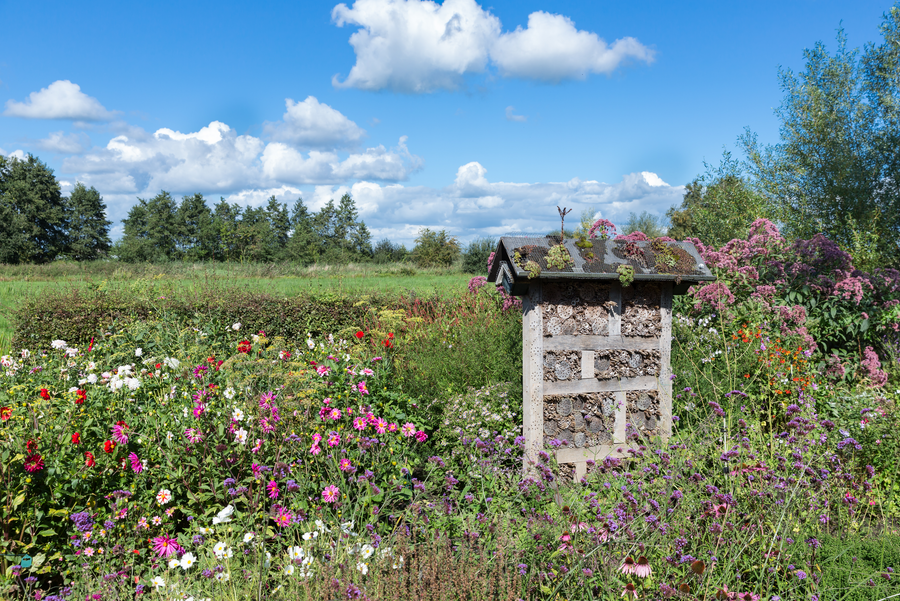
Beekeepers are very attentive to honey bees and try to place their hives as close as possible to a good food source, for example at the edge of a rape field or near flowering acacia trees. When the honey is harvested, the honeybees are given a sugar solution in return, so that the colony gets through the winter well. If they are sick, they are treated.
In contrast, wild bees are literally on their own. Most of the more than 500 different species of wild bees live solitary lives, which means they do not form a state. The majority of the wild bees cannot use the bee hotels, which can be seen everywhere by now, because they build their nests in the ground. For this they need open ground sites, which you don't find so often.
But besides lodging, wild bees also need food and that is what the many flowers in town and country are good for. All bees are vegetarians, they feed on pollen and nectar. With flowering plants on the balcony, on the terrace or in the garden you can contribute to feeding the bees. The flowers of the plants differ greatly in the amount of pollen and nectar they offer. For example, flowers of chives and thyme offer a lot of nectar and rather little pollen, whereas the opposite is true of mullein and blackberry. Stuffed flowers such as geraniums or forsythia usually do not provide food for bees.
Wild and honey bees do not normally compete for food. They often differ in their flight time, for example bumblebees fly much earlier in the year than honeybees. They also have different feeding preferences and sometimes completely different ranges. Some wild bees are completely adapted to a single plant species, e.g. the females of the scissor bees are specialized in bellflowers. The males also sometimes drink nectar from cranesbill.
Improving the situation of bees benefits all insects and a variety of other animals.
Further Information
